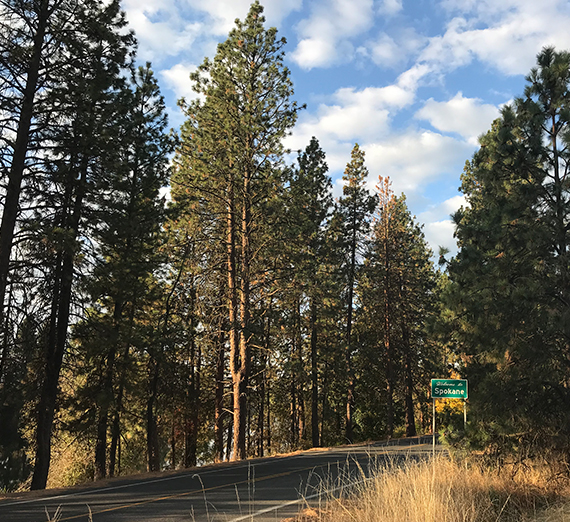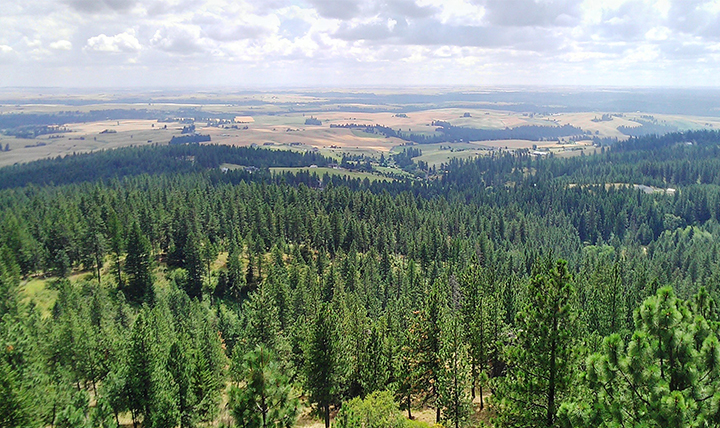Pining for Spokane

By Madeline Hueske ('19)
In 2014, the ponderosa pine tree was named the official tree of the city of Spokane. It makes sense, because the Spokane area was the first place the trees were documented. Merriweather Lewis described them in his journal in 1805, and Scottish scientist David Douglas botanically identified them in 1826. For a tree with so many historical roots in the area, however, there aren’t many in the urban areas of Spokane.
A local nonprofit collaborated with a Gonzaga research project to investigate this phenomenon. It was the brainchild of developer Larry Stone, who runs the organization Spokane Ponderosa. Stone worked with Associate Professor of Economics Ryan Herzog and his team of students Ian Staeheli (’16), Heather O’Halloran (’16) and Sharon Henzler (’17). They looked into the cost benefit of planting ponderosa pine trees along Spokane roadways. The current maintenance plan is to spray hydro seed, a mixture of mulch and grass seeds, along the buffer zones of roads. The non-native grasses require pest control throughout the year, contributing to high costs of maintenance.
“Every homeowner knows that if you plant a pine tree, nothing grows underneath it. So we’d be saving a lot on upkeep, as well as creating a nice buffer between the roadway and residential areas,” says Herzog. He and his students found that planting (or maintaining) ponderosas drastically decreases the cost of vegetation maintenance. In fact, Spokane County has the highest weed management expenses in the state of Washington.*
“There’s a nice environmental incentive as well. If you plant pine trees, you can’t go in and just spray herbicides everywhere to kill weeds. You have to be more diligent, which is good because we’re not getting thousands of gallons of chemicals dumped into the environment every year.”
The city of Spokane agreed with Herzog on the issue. City Council passed an ordinance in 2017 declaring that all new road development in Spokane would preserve and maintain the natural vegetation, which consists predominantly of ponderosa pines.
“It was a no-brainer for the city. We can return the area to its natural beauty without a lot of extraneous cost,” he says.
This is especially important for the new north-south freeway, Route 395, which is currently under construction. Herzog wants travelers to see the beauty the Inland Northwest has to offer, and showcasing one of our native trees is a great way to do that. “We wanted to return the city to its natural state. When you’re driving in on I-90 West, you know you’ve hit Spokane once you start to see the ponderosas and all the exposed rock. That’s the kind of thing we want to highlight in the city.”
*According to a 2018 article in the Spokesman Review.

